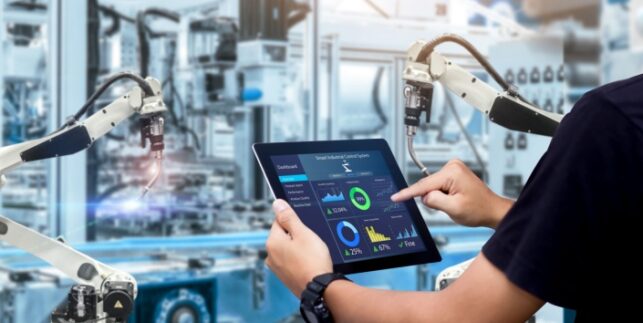Matics Webinar: Shifts in the Global Manufacturing Landscape With the Reshoring Initiative

Reshoring is one of the most widely discussed topics in manufacturing today, and it’s also the topic of the latest Matics webinar. It’s the ongoing process of bringing back manufacturing that has been offshored to developing countries and is a major point of focus in industrial development and policy making.
This webinar features recognized industry leader in reshoring and President of the Reshoring Initiative Harry Moser discussing the current status, future prospects, and challenges of reshoring with Matics Head of Sales and Operations in North America Brian Tilley. Read on for more information about reshoring, and check out this engaging webinar on a critical industry topic.
What Is Reshoring?
Reshoring is a conscious effort by industry leaders and policymakers in developed countries to bring back manufacturing jobs that have been offshored over the past five or so decades. It’s an important issue in the U.S. in particular. Once the world’s largest manufacturing base by a wide margin, the U.S. has seen a steady decline until recent reshoring efforts began.
Today, the world’s largest manufacturing base is China, which first passed the United States in 2010. Since then, Chinese growth and U.S. decline have led to a situation where Chinese manufacturing is more than double U.S. manufacturing, at $4.8 trillion and $2.3 trillion, respectively, according to numbers from the World Bank.
Other strong manufacturing bases like Japan and Germany have seen similar declines. Manufacturing has been offshored to many countries other than China as well, with notable examples including India, Mexico, Indonesia, Thailand, and Malaysia.
The trend of offshoring has left the U.S. with a manufacturing trade deficit of nearly $900 billion, with the once-largest manufacturing base now importing far more than it exports. Companies have moved offshore in an attempt to reduce costs, often relying on significantly lower labor prices abroad.
Reshoring is helping to reverse this trend, building up local manufacturing and bringing more jobs back from overseas. Some of the primary motivations behind reshoring are to reduce the trade deficit, mitigate the risk and instability associated with international trade, and improve supply chain management.
Further pressure comes from an upswing in consumer awareness regarding the environmental and social impact of offshoring. Consumers are turning away from products and brands that rely on the low wages and hazardous working conditions associated with offshore manufacturing. Environmental concerns are just as important, with many offshore manufacturing facilities relying on more carbon-intensive electricity and contributing to atmospheric and water pollution.
Reshoring efforts are now having more impact than ever before and are only accelerating as time goes on.
The Reshoring Initiative
The Reshoring Initiative is a non-profit organization committed to promoting reshoring and facilitating the process for U.S. companies. Its mission is to bring back offshored manufacturing jobs, with a goal of reaching 5 million reshored jobs.
The organization was founded in 2010 by Harry Moser, the former President of GF AgieCharmilles, now GF Machining Solutions. The success of the Reshoring Initiative has led to Moser receiving numerous industry awards and recognition and his participation in President Obama’s 2012 Insourcing Forum at the White House.
The Reshoring Initiative provides a number of resources and programs for companies that help them understand the benefits of reshoring, along with efforts in advocacy and education. Their import substitution program lets onshore manufacturers identify large importers who could be prospective customers, and their supply chain gap program helps organizations meet some of the key challenges of successfully reshoring their manufacturing.
Among the most important tools that the Reshoring Initiative uses to advance reshoring is the total cost of ownership (TCO). They provide a free online estimator that takes into account a range of cost factors that may not be accounted for when organizations compare onshore and offshore manufacturing options. This more accurate look at offshoring costs can help organizations realize the true benefits of reshoring.
Industries Undergoing Reshoring Today
Manufacturing encompasses an extensive range of industries and sectors, not all of which undergo reshoring or offshoring to the same extent. Some manufacturing sectors, like pharmaceuticals and aerospace, haven’t experienced significant offshoring, while others, like apparel, have been almost entirely offshored and haven’t seen substantial reshoring.
Transportation equipment has been one of the most significant success stories in reshoring, with a major shift back toward U.S. manufacturing. However, it has recently been surpassed in terms of total jobs coming back per year. Electrical equipment is currently the largest category, driven largely by the demand for electric vehicle batteries and major projects like the Tesla Gigafactory in Nevada. Chemical production is also seeing significant reshoring today.
Some industries are simply better suited to reshoring in today’s economic climate. Industries that benefit from advancements in robotics, process control, and automation can overcome the difference in onshore and offshore labor prices.
However, industries that are still very labor-intensive relative to overall costs are seeing less reshoring. Industries that have a consistent demand don’t deal with custom or rapidly changing designs and have access to cheap freight are typically cost-prohibitive for onshore manufacturers to compete.
Shifts in the industry are increasing the number of sectors where reshoring is viable. Rising wages in China are one important factor, although it is partially offset by simultaneous increases in productivity. Alongside increased reshoring to the U.S. and other developed countries, offshore manufacturing is slowly shifting its balance toward countries like Malaysia and Thailand that aren’t showing similar wage growth to China.
Manufacturing Culture in Developed Countries
In the U.S. and other developed countries, a significant cause of offshoring and challenge for reshoring is the cultural perception of manufacturing. The U.S. has largely become a service economy, and the predominant view almost everywhere is that a four-year university education is an essential step for just about everyone.
This has led to the perception that manufacturing jobs are to be avoided because they are low-paying, menial labor that should be avoided. This is a significant shift compared to the outlook just 50 years ago, when most service jobs were perceived as being less skilled and lower-paid than manufacturing jobs.
This attitude affects all levels of society, including policymakers and industry leaders themselves. Instead of investing in new manufacturing technology and equipment, companies simply accept the reality of offshoring.
However, reshoring efforts from the Reshoring Initiative and other sources are turning this around. More opportunities for apprenticeships and training in skilled manufacturing jobs are arising as the demand for more reshored manufacturing increases.
The Impact of Industry 4.0 on Reshoring
Much of the success that reshoring has seen over the past decade has been due to the multitude of opportunities that Industry 4.0 technologies now provide. Onshore manufacturing operations can increase productivity and reduce costs, making them competitive with offshore operations despite the significant difference in labor costs.
Matics is one of the organizations providing manufacturers with the solutions they need to leverage Industry 4.0 capabilities . Matics Real-time Operational Intelligence (RtOI) makes it possible to increase production efficiency through improved visibility, communications, and workflow management. Manufacturers can make the most of the equipment and processes they have available without increasing their labor costs.
RtOI aggregates production data from both OT and IT systems, along with sensors and IoT devices. The solution analyzes thiproduction data to identify trends and provide actionable insights for stakeholders. All of this is presented in a straightforward, customizable dashboard that provides access to production scheduling and workflow management tools.
For the manufacturers that Matics works with, this translates to reduced costs, increased machine availability, and overall higher productivity. The implementation of modern technology and solutions lets manufacturers in developed countries be more competitive than ever in the global marketplace.

Changing the way people work in factories
Request a DemoMore About Reshoring
To learn more about reshoring and the efforts of the Reshoring Initiative, you can check out the full webinar with Harry Moser and Brian Tilley. You’ll receive some industry-leading insight on where reshoring is headed and the challenges and opportunities facing the industry today.
If you’re part of an organization at any point in the supply chain, you can make use of the resources provided by the Reshoring Initiative to better understand the benefits of reshoring and demonstrate those benefits to your suppliers, buyers, and partners.
We would like to thank Harry Moser for taking the time to share his industry knowledge and insight with us, and we hope to hear from him and the Reshoring Initiative again in the future.




